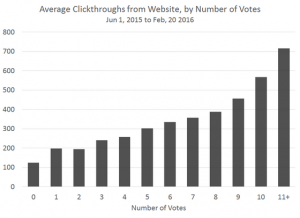This is a summary of links featured on Quantocracy on Monday, 06/20/2016. To see our most recent links, visit the Quant Mashup. Read on readers!
-
Digging Deeper into Adaptive Asset Allocation [Alpha Architect]In some ways, investing is simple. After all, we all want the same things. High returns. Low volatility. Small max drawdowns. Unfortunately, its very difficultif not impossibleto have your cake and eat it too. There are always tradeoffs among these desires that have to be managed by investors. Want low volatility? Be willing to accept lower returns. Want to maximize returns? You may have
-
Johansen Test for Cointegrating Time Series Analysis in R [Quant Start]In the previous article on the Cointegrated Augmented Dickey Fuller (CADF) test we noted that one of the biggest drawbacks of the test was that it was only capable of being applied to two separate time series. However, we can clearly imagine a set of three or more financial assets that might share an underlying cointegrated relationship. A trivial example would be three separate share classes on
-
Mini-Meucci : Appplying The Checklist – Steps 8-9 [Return and Risk]"Predicting rain doesn't count. Building arks does." Warren Buffett, The Oracle of Omaha (born 1930) In this penultimate leg of the tour we'll be visiting 2 more attractions along Via Meucci, Construction and Execution. Construction Portfolio Construction is another yuge! topic. In a nutshell, the overall goal is to find optimal holdings that maximize Satisfaction, subject to
-
Beginner’s Guide to Automated Trading with Python [Quant Insti]Python has emerged as one of the most popular language to code in Algorithmic Trading, owing to its ease of installation, free usage, easy structure, and availability of variety of modules. Globally, Algo Traders and researchers in Quant are extensively using Python for prototyping, backtesting, building their proprietary risk and order management system as well as in optimisation of testing
-
Is Internal Bar Strength A Random Walk? The Case of Exxon-Mobil [Jonathan Kinlay]For those who prefer a little more rigor in their quantitative research, I can offer more a somewhat more substantive statistical argument in favor of the IBS indication discussed in my previous post. Specifically, we can show quite convincingly that the IBS process is stationary, a highly desirable property much sought-after in, for example, the construction of statistical arbitrage strategies.
